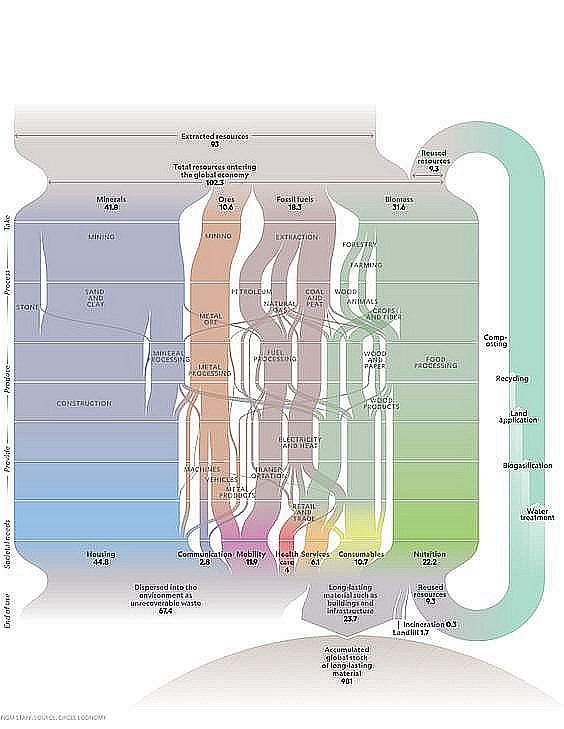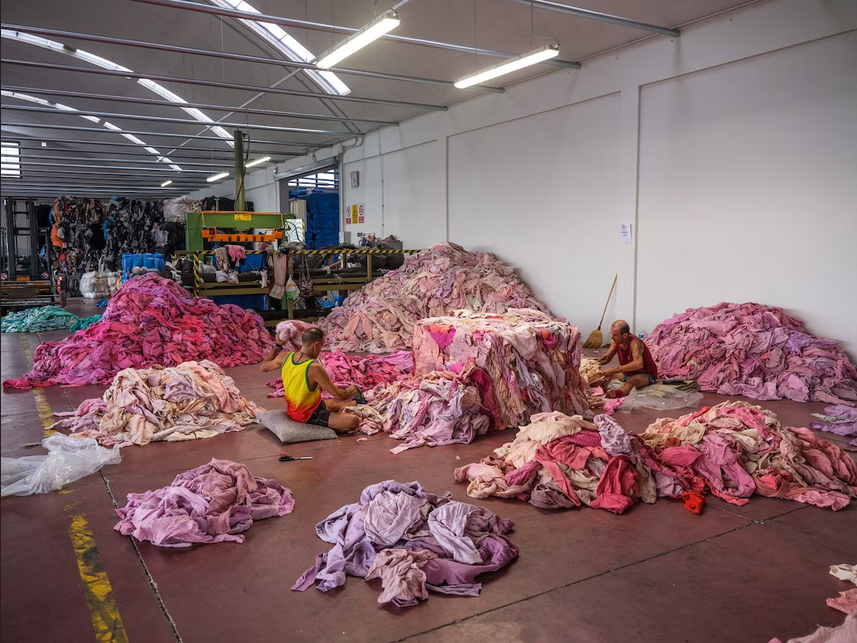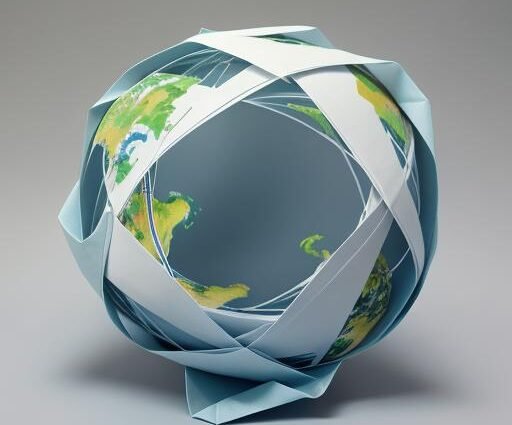The natural ecosystems operates differently from industrial economy because they are circular—plants grow in soil, animals eat plants, dung replenishes soil— on the other-hand industrial economy is largely linear. In this process, one can see in the diagram below, fat, colored currents of the four types of raw material—minerals, ores, fossil fuels, and biomass—surged from left to right, splitting and braiding as they became products that fulfill human needs.

These materials are used in various ways, such as in constructing buildings, manufacturing vehicles, and producing energy. In 2015, the total amount of materials used in the economy was 102.3 billion tons.
Everything is going well and impressive, especially if you appreciate human hard work and creativity. However, the issue arises after we have fulfilled our basic needs, leading to the biggest environmental problem- Waste. The gray fog on the right edge of the diagram fog is waste.
In 2015, over two-thirds of the material extracted from the planet was lost, with more than 67 billion tons dispersed and unable to be recovered. Plastic trash drifted into rivers and oceans; so did nitrates and phosphates leaching from fertilized fields. A third of all food rotted, even as the Amazon was deforested to produce more.

Think of an environmental problem, and chances are it’s connected to waste. That includes climate change: It happens because we burn fossil fuels and scatter the waste—carbon dioxide—into the atmosphere.
To get along on this Earth, we must do just one thing: Stop wasting and go circular just like natural ecosystems. Look at the thin arrow that circled back, from right to left, along the bottom of the diagram, representing all the material we’d managed to capture through recycling, composting, and all that goes into circular economy. It was only 9.3 billion tons: just 9 percent of the total.

For the past fifty years, environmentalists have been cautioning about the limitations of growth. However, the emerging “circular economy” movement takes a different approach. It encompasses various strategies, both traditional (such as reducing, reusing, and recycling) and innovative (like the concept of renting instead of owning), with the goal of transforming the global economy to minimize waste.
Unlike previous efforts, the circular economy does not seek to halt growth, but rather aims to align human activities with nature in order to sustain growth i.e. “Prosperity in a world of finite resources.”
Reference- National Geographic, Atom, Vox, The Guardian, BBC, Down To Earth, Business Insider






